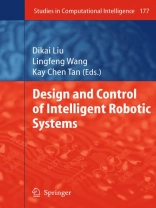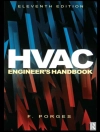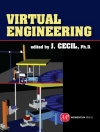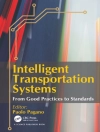With the increasing applications of intelligent robotic systems in various ?elds, the – sign and control of these systems have increasingly attracted interest from researchers. This edited book entitled “Design and Control of Intelligent Robotic Systems” in the book series of “Studies in Computational Intelligence” is a collection of some advanced research on design and control of intelligent robots. The works presented range in scope from design methodologies to robot development. Various design approaches and al- rithms, such as evolutionary computation, neural networks, fuzzy logic, learning, etc. are included. We also would like to mention that most studies reported in this book have been implemented in physical systems. An overview on the applications of computational intelligence in bio-inspired robotics is given in Chapter 1 by M. Begum and F. Karray, with highlights of the recent progress in bio-inspired robotics research and a focus on the usage of computational intelligence tools to design human-like cognitive abilities in the robotic systems. In Chapter 2, Lisa L. Grant and Ganesh K. Venayagamoorthy present greedy search, particle swarm optimization and fuzzy logic based strategies for navigating a swarm of robots for target search in a hazardous environment, with potential applications in high-risk tasks such as disaster recovery and hazardous material detection.
Tabela de Conteúdo
Computational Intelligence Techniques in Bio-inspired Robotics.- Swarm Intelligence for Collective Robotic Search.- A Glowworm Swarm Optimization Based Multi-robot System for Signal Source Localization.- Evolutionary Robotics: From Simulation-Based Behavior Learning to Direct Teaching in Real Environments.- Ranked Pareto Particle Swarm Optimization for Mobile Robot Motion Planning.- Path Planning Inspired on Emotional Intelligence.- An Exploration of Online Parallel Learning in Heterogeneous Multi-robot Swarms.- Robot Control in Dynamic Environments Using Memory-Based Learning.- A Behavior Based Control and Learning Approach to Real Robots.- Incremental Acquisition of Neural Structures through Evolution.- Evolutionary Terrain-Based Navigation of Autonomous Mobile Robots.- A Novel Intelligent Control Approach for Precise Tracking of Autonomous Robots.- Punctuated Anytime Learning to Evolve Robot Control for Area Coverage.- Local Methods for Supporting Grounded Communication in Robot Teams.- Vision SLAM Maps: Towards Richer Content.- Learning of Hierarchical Perception-Action Cycles.- Advancing Artificial Intelligence through Minimalist Humanoid Robotics.- Design, Modeling and Control of an Ankle Rehabilitation Robot.- Markovito: A Flexible and General Service Robot.- Task Based Hybrid Closure Grasping Optimization for Autonomous Robot Hand.- Triangular Targeting Algorithm (TTA) for Accurate Motion Control of Fast Mobile Robots.












